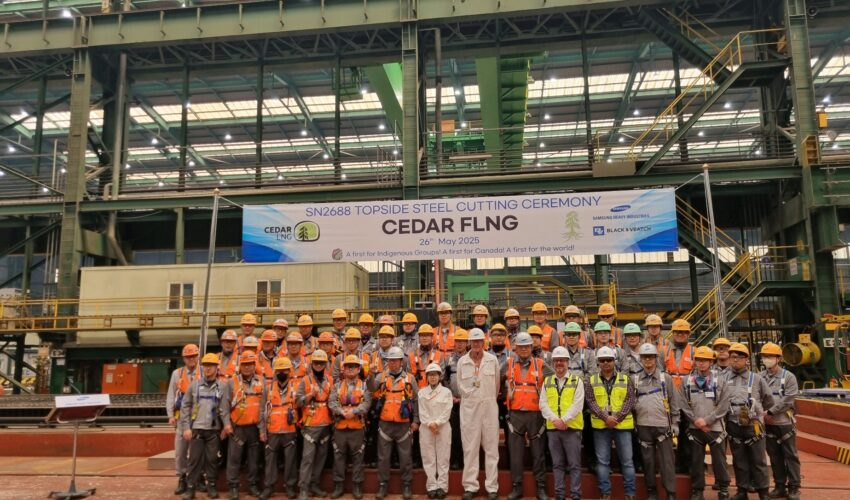June 6, 2025, Cedar LNG announced a significant development for the global LNG sector, Samsung Heavy Industries in South Korea to kick off the fabrication of Cedar LNG’s Floating Liquefied Nature Gas (FLNG).

While the design of the entire floating LNG system is still underway, certain components of the FLNG have entered the fabrication phase. Upon completion, the FLNG will be transported from South Korea to the Cedar LNG site in Haisla traditional territory, heralding a new era of Indigenous-led LNG exports for British Columbia, Canada, and the global energy landscape.
The FLNG is anticipated to be complete in 2028, prior to Cedar LNG’s estimated in-service date of late 2028.
Last June, Canadian oil and gas company Pembina Pipeline officially announced on its official website that Cedar LNG Partners LP (Cedar LNG), a joint venture between the company and the Haisla Nation of British Columbia, Canada, had made a positive final investment decision on the Cedar LNG project. It is understood that the final investment decision of the Cedar LNG project was originally planned to be reached in the first quarter of 2024, but was subsequently postponed to mid-2024.
The move also means that Samsung Heavy Industries’ contract to build the Cedar FLNG, signed on December 29, 2023, is officially confirmed, with the order valued at around 2.101 trillion won ($1.5 billion).
According to Samsung Heavy Industries’ statement, this type of FLNG is contracted by a consortium consisting of Samsung Heavy Industries and the US engineering company Black & Veatch. Samsung Heavy Industries is responsible for the FLNG hull, LNG containment system and upper module integration, while Black & Veatch is mainly responsible for the FLNG hull and upper module design. In April this year, Samsung Heavy Industries and Black & Veatch began to implement the Cedar FLNG front-end engineering and design (FEED) contract obtained in February 2022.
The FLNG will have an annual production capacity of approximately 3 million tonnes and will be built from natural gas produced in the rich Montney resource area in northeastern British Columbia. The FLNG will be located near the Canadian LNG plant and powered by renewable energy in British Columbia.
“To see the floating LNG vessel start to take shape is so incredible,” said Chief Councillor Crystal Smith. “In just a few short years, the vessel will arrive on our shores where it will serve as a reminder of what can be done when Indigenous Nations are given a share and a say in how our resources are used for the benefit of our people and the environment.”
Haisla Nation values of sustainability and environmental protection, values shared by partner Pembina Pipeline, have driven decision making from the beginning, including the selection of a floating facility to minimize environmental effects.
“This is an exciting moment for Cedar LNG as it represents the official start of construction on what will be an innovative, world-class, lower-carbon floating LNG facility,” said Craig Day, Project Director, Cedar LNG. “This achievement reflects the extensive planning efforts of our partners – Haisla Nation and Pembina Pipeline – our project team, and Samsung Heavy Industries and Black & Veatch.”


